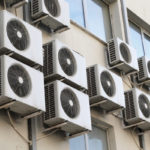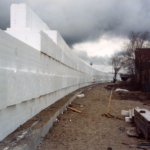
JUL29
Proven ways to reduce your electricity bills consistently
If you were born in India like me, it’s likely that you’ve grown up hearing phrases like ‘Close the door, the Air Conditioner is on!’ or “Have you seen the electricity bill lately? Reduce your Air Conditioner usage.” and others, a lot.
Although majority of India falls under the hot and dry climate, air-conditioners were not a household commodity up until the early 2000s and in many parts of the country, owning an air-conditioner is still considered a luxury. Here’s some proof, currently in India only 7% households have access to air-conditioned spaces and considering that India has a population of 1.3 billion people, that number is immensely small. But with a 23% annual increase of air-conditioner usage, it’s gradually becoming a part of people’s requisite. Using energy intensive appliances like air-conditioners not only causes greenhouse gas emissions but also emits hot air, warming up the planet and forcing us to use more of the appliance. Its a vicious cycle and there is no running away from the fact that sooner or later every household will need an air conditioner or another solution for cooling spaces to survive.
Owning an air conditioner is like constantly adding coins into a slot to keep it running.
We calculated that an average 1.5 ton air-conditioner when operated for 3 hours daily generates 5 times the operating cost than the cost of the machine in a lifetime.“
So this brings us to the term Life Cycle Costs (LCC) which means the total cost of ownership over the life of an asset. In the case of air conditioners, the operating costs come in the form of electricity bills.
So is there a way to reduce electricity bills and use air conditioners efficiently? Conventional cooling methods range from ancient hand fans to evaporative air-coolers and are still in use due to their higher efficiency as compared to air-conditioners. Although looking at the current electricity consumption in Indian homes, the use of air conditioners is increasing and inevitable. We are in the midst of a pandemic pushing our focus towards indoor air quality above everything else. The attention is on how we design, construct and operate our buildings.
Designing and constructing the perfect building envelope is key. It is important to design spaces with a sustainable approach in mind by not only making efficient use of resources but also feasible and self-sufficient energy usage. An integrative process is required involving all the key stakeholders of the building from conception to completion. The team needs to take the Life Cycle Approach where in the life of the project and eventual reuse or demolition is considered from the design phase of the project.
Energy is used for multiple purposes in a building like water management, lighting, heating or cooling spaces, heating water, internet & electrical appliances. The aim here is to reduce the energy consumption in a way that the purpose is fulfilled optimally. Let’s look at our subject of reducing energy consumption of heating/cooling buildings.
Heating Ventilation and Air Conditioning (HVAC) takes up about 55% of the total energy consumption of a building. Typically, a building envelope would include walls, roofs, windows, doors and floors. Heat Gain or Loss is directly related to the materials used for each of these envelopes. Roofs and walls constitute for about 35% and 18% of heat gain in a building respectively which makes these elements a crucial place of entry or exit of heat in the building. Materials have a property known as thermal conductivity or K value which is the amount of heat that passes through a particular surface and helps us calculate the amount of heat gain or loss in a building.
Insulating the building envelope is a must and the reason is their lower K-value which allows minimum heat to pass through the element. This helps reduce the overall use of heating or cooling equipment in a building. Specifically, for hotter climates, the air conditioner loading can be significantly reduced which increases its efficiency which in turn leads to cheaper electricity bills. Since the maximum heat gain in a building occurs through the walls and roofs, insulated roofs and walls in the correct mechanism can give about 30% energy savings annually in hot climates. This leads to a payback period of 1-2 years depending on the energy usage of a building and other factors. There are various ways to insulate roofs and walls, externally as well as internally but the implementation needs to be done correctly in order to obtain ideal results. Government tool by the Bureau of Energy Efficiency, Eco Niwas is a great way to obtain an over all insight on the energy performance of the building.
Factors of a building such as orientation of the building, location of the building, natural shading, use of day lighting, height of the building, play a major role in deciding the heat gain and loss through various elements. Hence, while designing a building designers need to take into consideration the best possible scenarios for all of the factors mentioned along with providing the correct mechanism of insulation for the roofs and walls.
Additionally, while using air-conditioners in the perfectly insulated and correctly designed building, there are a few thumb rules of operating it.
1. The air-conditioner requires regular maintenance to run seamlessly. Faulty parts or clogged air filters or damaged coils can use more energy to do the same job otherwise done with lower consumption.
2. Comfortable temperatures range from 24 -25 degree celsius and running the air-conditioner at a constant temperature can give the best output in terms of efficiency. Take the One Degree Challenge!
3. Constantly switching the machine on and off can also reduce its efficiency significantly and should be avoided.
4. It is important to open doors & windows once or twice a day for fresh air intake. It not only helps with the health and indoor air quality but also to maintain comfortable temperatures to help efficient use of air conditioners.
5. Your air-conditioner should be up to date with the best ratings available as per the consumer standards, or you could buy a new one fulfilling the same. This is our best option until global cooling prize winners or carbon capture technology is successful.
6. Considering that we are in the midst of a pandemic, indoor air quality needs to be given utmost importance. Denser filters, UV light and bipolar ionisation are techniques most experts are suggesting for best results against the virus. Although this leads to more energy usage, health and safety is a priority.
Since ancient times, Indian buildings have been designed to withstand all types of weathers. Being a late adapter of the air-conditioning technology, techniques like facades, brise soleil, louvers, mud huts and many others have been used in all Indian buildings. If we stick to the roots and integrate nature and it’s elements, we can avoid building concrete jungles, unnecessary glass facades and take up more sustainable approaches.
These are the tips that we would recommend to obtain a lifetime of cost savings in terms of lower electricity bills. It is important today more than ever to think about what we consume and how we can contribute in our own small way to the larger fight against reducing CO2 emissions.
It is estimated that the energy demand in the building sector will rise from 350 billion units in 2018 to approximately 1000 billion units by 2030“ – Mercom India
In order to know more about insulating buildings, do get in touch with our team of experts.




Comments(3)
Sonny Alonzo Vargas
Hallo, es ist immer toll, andere Menschen bei meiner Suche durch die ganze Welt zu sehen. Ich schätze die Zeit sehr, die es hätte brauchen müssen, um diesen großartigen Artikel zusammenzustellen. Prost Sonny Alonzo Vargas
erotik izle
J’ai lu plusieurs choses excellentes ici. Signet de prix définitivement pour revisiter. Je me demande combien de fois vous tentez de créer un excellent site Web informatif. Joice Artur Tanah
erotik izle
Você tem um fabuloso blog de graças. Flo Rab Pressey